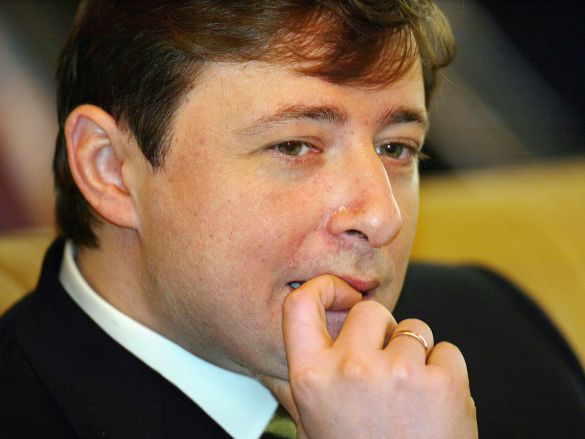
Khloponin’s Innovative Approach to the North Caucasus Faces Uphill Struggle
Publication: Eurasia Daily Monitor Volume: 7 Issue: 129
By:

On July 2, the newspaper Vedomosti unveiled Aleksandr Khloponin’s long-promised ambitious plan to develop the North Caucasus Federal District. The three possible scenarios in the North Caucasus are described as inertial, basic and optimal, with the last being favored the most. The optimal scenario is designed to overcome the hallmarks of the North Caucasus as seen from Moscow –the influence of clans, corruption, primitive economic forms, ethnic separatism, religious radicalism, the degradation of skilled labor force and the inclination among part of population to depend excessively on state handouts (Vedomosti, July 2).
Moscow’s decreasing ability to finance the North Caucasus, pressures connected to the Sochi Winter Olympics in 2014 and the unending violence in the region may be behind Moscow’s attempt to change its strategy in the North Caucasus.
The North Caucasus Federal District, which includes all the North Caucasian republics except Adygea and the Russian-speaking Stavropol region, comprises 6.5 percent of the population of the Russian Federation, while supplying only 1.18 percent of the country’s tax revenues. All the region’s republics receive more than half of their budgetary funds from Moscow, with Chechnya and Ingushetia obtaining over 90 percent of their budget funds from the federal center while Stavropol receives only 35 percent. Khloponin argues that there is no correlation between the economic development of a region and the amount of federal money it receives. So, he proposes launching priority projects, along with improving the overall investment climate in the North Caucasus in 2010-2012 and starting an “active growth phase” in 2013-2025. Implementation of the strategy is left to the head of the North Caucasus Federal District, which implies a diminishing role for the republican authorities and an increasing role for Moscow’s envoy (Vedomosti, July 2).
The development of the transport infrastructure in the North Caucasus is probably the most extreme example of the policy change that Khloponin’s team is advocating. It envisages construction of highways across the North Caucasus, invigorating the development of railroads to the South Caucasus, construction of ports on the Dagestani coast of the Caspian Sea and creating a transport corridor to Iran.
The strategy heavily depends on the government’s direct investments and tax breaks for private enterprises. A member of Khloponin’s team said that there was not yet any sign of Moscow’s approval of the strategy and that the extent of the resources the Kremlin would commit to the program was unknown. An anonymous Russian government official said that the new strategy would create a state within a state with lower or zero taxes, virtually an offshore zone –something that Moscow would be highly unlikely to support (Vedomosti, July 2).
While Khloponin seems to be striving to strengthen the links between the North Caucasus and rest of Russia, he also plans to tap the transit potential of the region. This, in effect, would lead to breaking the North Caucasus’ relative isolation from its immediate neighborhood and potentially other parts of the world. It is unlikely that this impending outcome will be received well in Moscow, which has invariably and persistently sought to limit any foreign presence in the region. High levels of investment into the North Caucasus alongside the numerous problems of the ethnic Russian regions may be politically damaging and unacceptable for the government in Moscow.
Another source of systemic opposition to Khloponin’s proposals comes from the local governors in the North Caucasus, who have grown used to exercising full control over money flows, but under the new strategy are being forced to become mere members of a bureaucratic team. Moscow will have to break up the local government circles and redistribute power, something that is hard to do without jeopardizing an already unstable situation in the region. Alternatively, the local governors will have to be incentivized to support economic growth in the region. That, in turn, will probably increase their power, which Moscow was trying to limit.
The insurgency remains a significant factor that is not going to go away even if all the economic plans are implemented. Though economic disillusionment is clearly part of the problem of violence in the North Caucasus, it is not the only one. The overall lack of popular representation and therefore legitimacy of the government in this ethnically diverse region is likely to render any economic reform useless, unless it is accompanied by political change.
A shortage of funds may be a serious factor that drives Russian reformism in the North Caucasus. On June 22, the Russian delegation to the Parliamentary Assembly of the Council of Europe (PACE) for the first time voted in favor of a resolution on the North Caucasus. PACE urged Russia to fight terrorism in the North Caucasus by “respecting fundamental rights and the tenets of the rule of law,” by following the example of other countries that have had to face it, and by working more closely with local NGO’s and the Council of Europe (www.assembly.coe.int, June 22). Feeling the right momentum, former US Deputy Assistant Secretary of State, Ronald D. Asmus, called on Washington “to engage Moscow on the North Caucasus” in order “to limit the collateral damage and potential spillover from such policies in the South Caucasus” (The Washington Post, July 3).
There are also several possible side interests that may inhibit the new initiatives by Khloponin. One could be an attempt to boost the North Caucasus population’s loyalty to Moscow with promises of future investments to ensure that lavishly funded preparations for the Sochi Olympics in 2014 are sufficiently insulated from popular and elite resentment in the region. Another consideration might be purely fiscal –namely, that lower or zero taxes would allow big Russian businesses to improve profit margins by registering in the North Caucasus and working elsewhere. In any case, very significant financial and political resources seem to be at play around the reforms in the North Caucasus, which ensures there will be a serious political struggle at the very top level of Russian leadership.




